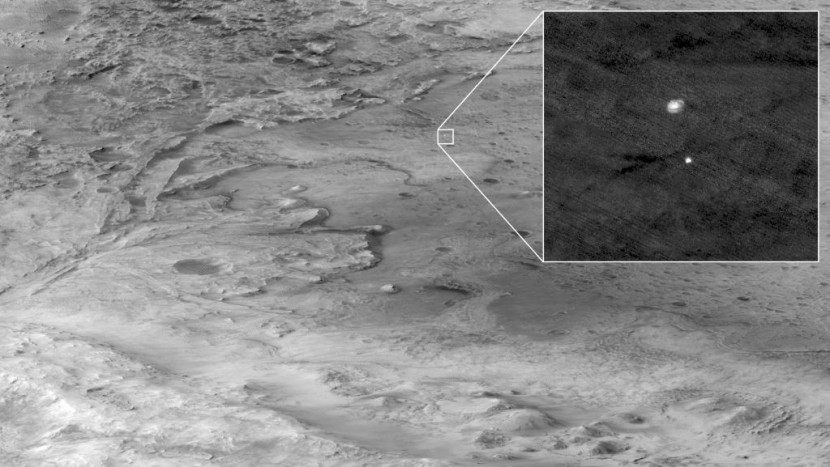
A European Space Agency (ESA) space probe took a picture of the surface of planet Mars when it orbited and captured the image of a huge creepy eye peering like a nightmare.
The large crater eye is as big as a city that looks like it's looking back to space; to scientists, it can help understand the geological history of Mars.
Asteroid Strikes Billions of Years Ago
The crater measures about 30 kilometers in radius and is found in the southern hemisphere of mars called Aonia Terra, reported Science Alert.
Craters covered the red planet and were captured by ESAs New Mars Express is not as big as the Lowell Crater, which is extremely huge at 200 kilometers in radius.
Like many craters pockmarking the region, Lowell is thought to have been created by huge impacts from space about 4 billion years ago. This period was a very chaotic stage when the Solar System was ancient and called the Late Heavy Bombardment.
Earth was also bombarded by a process that is supposed to have been the harbinger that gifted proto-earth with the water and organic compounds, but the geological upheavals have removed the early evidence from the surface.
In contrast, Mars is far more barren and less geological active; it allows scientists on earth to see an example of a more chaotic surface for gross comparison.
Aonia Terra Region on Mars
Places like Aonia Terra could give hints about the geologic secrets of Mars. A violent impact excavates material that might otherwise be hidden below the surface, creating new surface geologies and compositions captured by the ESA space probe on planet mars showing the huge creepy eye.
Read Also : Paleontologists Discover Largest Carnivorous Dinosaur That Existed During the Cretaceous in Europe
The surface composition in the region depicted in the new image appears complex and diverse. The unnamed eye crater is situated in a landscape sculpted by channels most likely created billions of years ago by river systems of liquid water flowing across the ground.
Traces of darker material is seen in these channels, some of them seem to be raised. Maybe as a result of erosion-resistant material getting settled in dried-up riverbeds and remaining even when windstorms eroded the river's walls, noted eoPortal.
Smaller craters with flat-topped buttes are in the region to the southern direction of the crater, but the north has a smoother landscape and paler.
The material in the crater's center is darker, visible, and looks like a shadowy and rippled dune. There are cone-shaped mounds and buttes in the crater, which is thought to be where materials would accumulate.
Mars' Surface Observations
More precise observations and a larger package of instruments might reveal extra comprehensive information about the crater and its environment, but how much we can learn even from pictures captured at such a distance is remarkable.
Equipped with a high-resolution stereo camera to capture more details about the mineral colors seen in the images, it allows a complete picture of the nature of Mar's surface.
An image of the eye on the red planet stirs the imagination of how it looks in space, like one of the oddities of Mars we don't understand yet.
ESA space probe that took a picture of the surface of planet mars capturing the huge creepy eye crater will be studied concerning cratering it in former ages.
Related Article : Galactic Evolution Observed Through Time Machine Simulations To Trace Cosmic Lifecycles
© 2026 HNGN, All rights reserved. Do not reproduce without permission.








